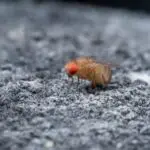Why Flies Are Hard to Kill
If you’ve ever tried to kill a fly, you may have been puzzled by the fact that they can change direction and flap their wings up to 200 times per second. Flies are also very agile, with their hindwings helping them to quickly take off and escape. These features are what make flies so difficult to kill.
Houseflies are not only a nuisance, but they can also be a health risk. They can crawl on food, contaminate surfaces, and spread disease. These pests can be difficult to get rid of because of their tiny size and agility. In addition, their near microscopic brains and heightened visual awareness allow them to avoid the threat of being swatted.
Fruit flies have a 270-degree vision, which helps them detect an attacker from any angle. They can plan their escape route in just 100 milliseconds. Moreover, these flies can reproduce up to ten generations at a time, and in warm climates, they can produce as many as twenty generations.
The order Diptera includes many types of flies. The size of an adult fly can vary from a tenth of an inch to almost 3/4 of an inch, and different breeds have different coloration. However, there are some general characteristics shared by all flies. All flies have only one pair of wings. This allows them to distinguish themselves from other flying pests.








